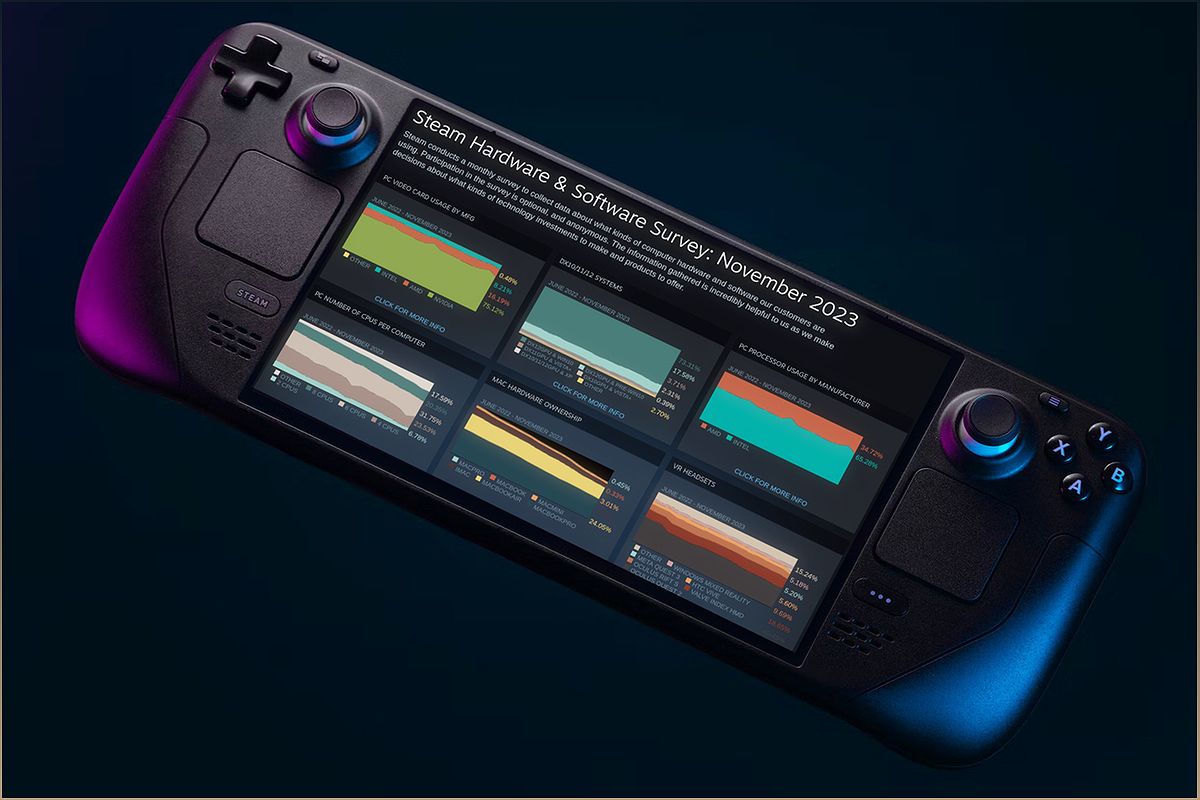In the November 2023 Steam Survey, a notable shift in operating system adoption and gaming hardware preferences has been observed. Windows 11 and the Steam Deck are experiencing a surge in popularity, while Windows 10 users are dwindling. Join me as we delve into the details of this fascinating trend and explore the implications for gamers and developers alike.
Windows 11: The Rising Star of Operating Systems
Discover the growing popularity of Windows 11 and its impact on the gaming community.
With a significant 11.51% increase in market share, Windows 11 has emerged as a strong contender in the realm of operating systems. Its sleek design, enhanced performance, and compatibility with the latest gaming technologies have captured the attention of gamers worldwide.
Windows 11's seamless integration with the Steam Deck has further fueled its popularity, as users are drawn to the idea of a dedicated gaming device running on this new operating system. The rise of Windows 11 signifies a shift in the gaming landscape, with potential implications for developers and gamers alike.
Windows 10 Users Decline: The Changing Tides
Explore the reasons behind the decline in Windows 10 users and the implications for the gaming community.
While Windows 11 gains momentum, its predecessor, Windows 10, has experienced a noticeable decline in users, with a reduction of 12.05% in market share. This shift can be attributed to various factors, such as the allure of new features and optimizations offered by Windows 11, as well as the growing popularity of alternative operating systems.
Interestingly, some Windows 10 users are transitioning to Windows 11 on their Steam Decks, attracted by the promise of a seamless gaming experience and improved performance. This decline in Windows 10 users signifies a changing landscape in the gaming community, prompting developers to adapt to the evolving preferences of their audience.
The Steam Deck Effect: Linux and macOS Adoption on the Rise
Uncover the impact of the Steam Deck on the adoption of Linux and macOS as gaming operating systems.
The introduction of the Steam Deck has sparked a surge in the adoption of Linux as a gaming operating system. Currently, it accounts for an impressive 42.99% of all Steam installations on Linux. This can be attributed to the compatibility and performance optimizations specifically tailored for the Steam Deck.
Additionally, macOS has also witnessed a slight increase in adoption, gaining 0.34% of the market share. While still a relatively small percentage, this growth highlights the growing interest in alternative gaming platforms among Mac users.
Developers should take note of these trends, as the release of the Steam Deck OLED is expected to further propel the adoption of Linux as a gaming platform. This presents an opportunity for game developers to explore and cater to a wider audience, beyond the traditional Windows ecosystem.
Hardware Trends: The Shift Towards Mid-Range Configurations
Explore the changing landscape of hardware configurations and their impact on gaming performance.
While there have been no major changes in hardware trends, there is a noticeable shift towards mid-range configurations. Quad-core CPUs have gained 4.09% of the market share, indicating their increasing popularity among gamers.
The most common CPU configuration remains the six-core CPU, with a market share of 31.88%. However, the quad-core configuration is not far behind, capturing 23% of the market. This shift towards mid-range hardware suggests that gamers are seeking a balance between performance and affordability.
Display Resolution: 4K on the Rise, 1440p on the Decline
Discover the changing preferences in display resolutions and their impact on the gaming experience.
1080p continues to dominate the gaming landscape, with a market share of 60.09%. However, there is a growing interest in 4K displays, which now represent 3.72% of displays used for Steam games. This shift towards higher resolutions reflects the increasing demand for immersive and visually stunning gaming experiences.
Interestingly, the use of 1440p displays has decreased by 7.17%. This decline may be attributed to the growing availability and affordability of 4K displays, enticing gamers to upgrade their visual setup for a more captivating gaming journey.
Graphics Card Evolution: The VRAM Dilemma
Examine the changing landscape of graphics cards and the impact of VRAM on gaming performance.
The market share of graphics cards with 4 GB of VRAM has increased by 3.71%, indicating their growing popularity among gamers. This shift is accompanied by a decline in the market share of graphics cards with 8 GB of VRAM, which lost 3.63% of its share.
It is becoming evident that 8 GB of VRAM is no longer sufficient to run many modern games smoothly. As game developers push the boundaries of graphics and performance, gamers are seeking graphics cards with higher VRAM capacities to ensure optimal gameplay experiences.

